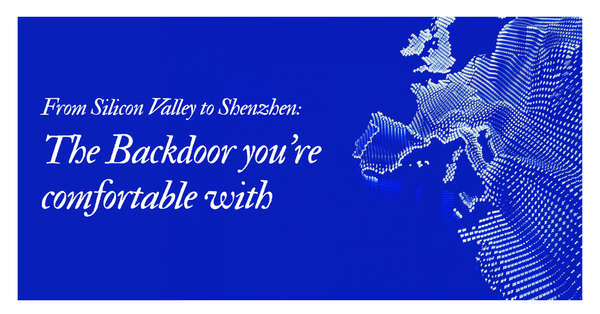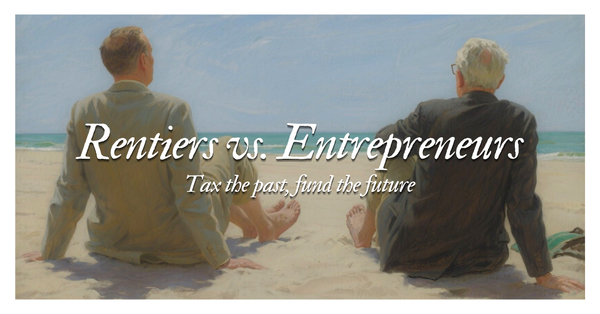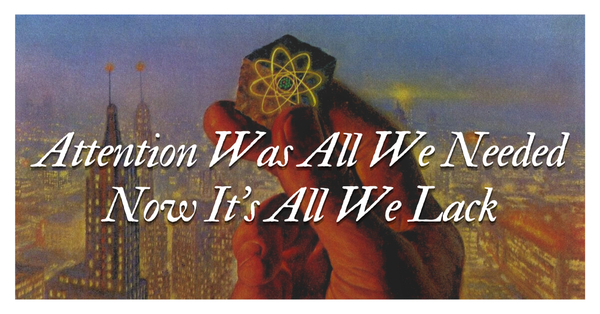The Unfair Game - Why Fundraising Asymmetry Is a Feature, Not a Bug
When fundraising, founders must understand the rules, cultural differences and prepare strong narratives. It's about balancing vision with execution, showing ambition and having a clear path to success.

“Imagine strolling into a Vegas poker room where every player has logged 10 000 hands today, while you are still reading the rules. Welcome to the world of fundraising.”
A founder pulls up a chair at the high‑stakes fundraising table only a handful of times in their life. The venture capitalist is the resident pro who has played thousands of hands here. Investors can read the table better than any other entrepreneur because they've played the game hundreds of times. That being said, expertise doesn’t guarantee their victory: For investors, seven or eight of every ten rounds end in a loss before the final card is played. Their success rests not on their ability to win a majority of hands, but to optimise small losses in pursuit of one or two game‑changing wins.
As investors, we learn to read tells you did not know you had, infer problems from half‑answered questions and, for better or for worst, often coming to conclusions after 30 minute encounters. It feels unfair because it is. That imbalance keeps the system working.
Earlier this year, I was at a Granola event (they are hiring) and had a pretty deep conversation with a founder around the thinking, the incentives and the motivations of venture investors. I've had this conversation many times in different shapes and forms so here's my humble contribution to help first-time founders navigate this strange world to prepare you for the day that you join us at the poker table.
ps: This blogpost is a longer version of my Sifted op-ed earlier this year - and one I'll be able to update as more ideas drip in.
The Structural Asymmetry of Fundraising
Founders might raise capital 4-5 times across a decade; an average partner goes through more than a thousand pitches every year, hundreds of founder pitch meetings. Muscle memory compounds. Slide order, a single throat clear on the TAM slide, the tone shift when you quote CAC payback, each becomes data in a local mental pattern-matching library. Opportunity cost is a VCs biggest risk, speed matters and conclusions must be quick. We will take shortcuts. Your role as a founder is to steer us away from any shortcut that lead to a pass email.
No universal cheat‑sheet exists for a successful pitch. The best founders routinely raise without slides, while others routinely fail despite using the “guaranteed-funding master deck" they saw on Linkedin. The information gap survives because it helps both sides. Founders with genuine signal get to break through the noise while investors get to decisions faster. If the articulation of your thinking in your memo or deck is blurry and messy, good luck getting to a meeting.
"But this excludes founders who aren't part of the right networks!!"
Well a) send them this article - and b) I believe that most entrepreneurs are positive sum. If it's your first time fundraising, reaching out to a founder who has raised in the past is the fastest way to learn the rules. Reach out to 10, get answers from 3, you're already ahead of most of your competition. The downside to asking is zero, the upside is, like successful venture deals, uncapped! In any case, stop searching for the perfect deck template. Templates won't save you, strong narratives and ready answers can. Find the quickest route to those and you'll do well.
Green‑Flag Overload
In a first meeting, your unique goal is to capture the attention and imagination of the investor you're seeing. Feed the "this-is-a-huge-outcome" brain of the investor with an exciting articulation of your grand vision and ambition. Feed the analytical brain of the investor with structured answers to their questions.
After (during?) the call every investor asks 3 questions:
- If everything goes right, how big can this become?
- Is this team the right team for the mission?
- What are the three bets that must work?
Below are simple patterns we notice:
Green flags ✅
| Category | Example | Instinct triggered |
|---|---|---|
| Ambition | “We build payroll rails for 400 M remote workers: a €50 B market.” | Market is big enough to matter |
| Context‑switching | Seamless hop from company vision to CAC/LTV math | Founder operates comfortably at many levels |
| Self‑awareness | “Our first sales hire joins next month and brings ten years of SaaS experience.” | Gaps identified and pro-active mitigation |
| Customer pull | Early LOIs with design partners | Demand signal is real |
Orange / Red Flags 🚩
| Category | Example | Fear activated |
| Over‑sell | Thirty‑slide vision monologue with no roadmap or interim milestones | No substance? |
| Under‑sell | Over-indexing on breakeven or questioning the pace at which they could execute if things go well | Too low ambition? |
| Blind spot | Shrug on CAC/LTV or regulatory hurdles | Execution naivety? |
| Body language | Longer-than-usual silence during equity‑split discussion, founders interrupting one another repeatedly, a single founder doing the talking | Possible team imbalance/tension |
As you can see from above, the orange and red flags are all things you can mitigate by working on your strategy, pitch and delivery. Just make sure your green flags overwhelmingly compensate the rest.
Cultural Calibration: Vision × Precision
A persistent cliché in venture capital claims that American founders emphasize bold visions, while European engineers focus on technical details.The gap is shrinking but it still exists.
Quick rant. In France, Engineering students are often taught that their value lies in analytical precision, rigorous problem-solving and "discipline"... As Paul Graham once said "One of the most dangerous illusions you get from school is the idea that doing great things requires a lot of discipline".
Engineering students internalise the myth that “the best product wins” and that an MBA co‑founder must do the pitching. It's BS. Selling is a skill, not an innate badge (certainly not one you get systematically from business school), and plenty of engineers become insanely talented CEOs pitching ambitious visions.
Great founders all share the unique ability to context-switch in a snap. Investors look for that "gear‑shift" ability: seamless switching between unit-economics detail and ten‑thousand‑foot/billion-dollar vision.
Two contrasting pitches:
Electric vehicles
- United States version: “We will reinvent urban transport with fully autonomous electric vehicles by 2028. Partnerships with major tech firms let us integrate AI navigation.”
- Europe version: “Our prototype already covers 300 miles per charge. Full autonomy is on the roadmap, but we focus first on battery efficiency and safety.”
Renewable energy
- United States version: “Our mission is for solar to become the world’s primary energy source within a decade. We hold term sheets from global utilities.”
- Europe version: “Our panels hit 25 percent efficiency in lab tests. We will scale production and cut cost to hit commercial viability in three years.”
Neither style is wrong. The winning pitch fuses audacious vision with crisp execution steps.
Star‑Aligned Scenarios and Venture Math
Why does the billion-euro dream matter anyway? VC portfolios obey a power law. Two or three breakout wins return the entire fund. Downside is capped, you can only lose the principal, so even a low‑percentage shot at a 100× outcome could lead to a term sheet. The upside that funds look for is dictated by their fund size too, keep that in mind when pitching funds of different shapes and sizes.
To clear the bar you need 3 credibility pillars:
- A plausible path to 100× that covers both technology and business.
- Evidence the team understands the biggest risks and has a mitigation plan.
- Proof you can attract unfair resources, from talent to capital to partnerships.
Make that trifecta believable and VCs will want in. Refusing to pitch anything you are not 95% sure you can deliver may risk self‑selecting you out of venture conversations altogether. Speaking the same language is not faking it, it is basic translation. Narrate a future where your success totally changes a market, and do it in a voice that feels authentic.
On this note, you may think "oh but my business plan needs to be grounded in reality" - yes but that's not what VCs at early stage will care about. VCs care about the underlying assumptions behind your business plan, the variables you've put in that lead to a 2x or 20x. I haven't ever held a founder accountable at pre-seed for their business plan for the simple reason that it isn't what we underwrite those deals on. Team + Market is 99% of the work, convince a VC you're the right team for the job in the right market and you should be discussing terms fairly quickly.
Turning Asymmetry into Advantage
You cannot erase the imbalance or your lack of knowledge, but you can exploit it.
- Be brutally self‑reflective. Diagnose weak spots and fix them before pitch day. Don't hesitate to ask for help.
- Bridge vision and detail. Slide effortlessly between the bigger picture and the execution/business plan.
- Sell the star‑aligned scenario and what that could mean (a 100m outcome? 1bn? 1trn?).
Hopefully after reading this, you'll understand that game hasn't become any easier... but that your chances of leaving a winner may have increased ever so slightly.
Now go build this rocketship!
Little running Q&A I've gotten from founders after this post
How should entrepreneurs think about having "early conversations" with VCs?
The answer depends on the audience (whether I'm trying to educate all entrepreneurs or whether I'm looking to help the top 10%). For the majority of entrepreneurs, there is no such thing as talking to VCs "too early". It's good for them because they'll be able to create a real relationship and not a dating/seduction/competition sprint with several VCs. It's different for the top 10% that could maybe build momentum on the back of their pedigree, but that's at the risk of choosing a partner in a short amount of time and less time to get to know the partner they'll work with...
Is it a big risk to have early conversations?
The challenge is that (some) first-time founders don't understand that a conversation serves as a timestamp of one's thinking that allows us to assess their velocity/speed of execution. If I see you two months apart, I'm hoping to hear some news about your rate of learning (could be product, sales, your thinking, whatever really), not a "yes, we're moving forward slowly." Call it pace, rate of learning, velocity, speed of execution - this is what VCs care about deeply.
Who Should Be on the Fundraising Call?
1. Keep the Group Small and Purposeful
- Ideal number: 1–3 people. More than that risks diluting focus and creating awkward dynamics.
- Why? Fewer voices mean clearer communication and less chance of mixed messages. It also respects your team’s time.
2. Vision vs. Execution: Zooming In and Out
Founders must master the art of zooming out to paint the big vision, and zooming in to demonstrate credible execution. This duality is what makes a pitch compelling.
- Vision is non-negotiable: As the founder, you must own and articulate the high-level vision. VCs back founders, not C-levels. If the CFO or COO dominates the conversation, it signals a lack of founder confidence or misaligned roles.
- Execution can be delegated strategically: While the vision is yours, the granularity of how you’ll achieve it can, and often should, be shared by your team. For example:
- Your CTO might dive into the product roadmap or technical feasibility.
- Your CFO could address unit economics or scaling challenges.
- Timing matters: Delegating execution details is most effective in follow-up conversations, not the first call. Early interactions should focus on the founder’s ability to inspire confidence in the vision.
3. The “Internal Fundraiser” Trap
- Red flag: If a C-level (CFO or COO) is leading the fundraise at early stage, it can feel like the founder is outsourcing their core responsibility. VCs want to see the founder’s passion and ownership. If you’re not confident pitching, work on it, don’t delegate it.
- Exception: If a C-level is a co-founder or deeply embedded in the vision, for example, a technical co-founder, their participation can reinforce credibility.
4. Investor Psychology: What VCs Really Care About
- Team dynamics: VCs scrutinize how founders and leaders interact. A cohesive, confident team is a green flag, tension or confusion is a red flag.
- Founder resilience: Can the founder handle tough questions? Over-reliance on others can signal a lack of grit.
- Authenticity: Over-rehearsed or overly delegated pitches feel inauthentic. VCs want to see the real founder and the real vision, not a script.
5. Prepare Your Team and Know When to Bring Them In
- Clarify speaking roles: Who covers what? Avoid overlaps or awkward silences. Rehearse to ensure everyone is aligned on the narrative and can handle tough questions.
- Later-stage rounds: As the company scales, involving C-levels, for example, CFO for financials or CRO for revenue, becomes more relevant.
- Specialized topics: If the conversation dives into legal, regulatory, or niche technical areas, bring in the expert, but keep it brief.
Tldr:
- You are the storyteller: The vision is yours to own and convey.
- Less is more: Keep the group small and purposeful.
- Master the zoom: Paint the vision, but be ready to dive into execution, just not all at once.
- Prepare your team: Everyone should know their role and the narrative.
- Avoid delegation traps: If you’re not confident pitching, work on it, don’t outsource it.




